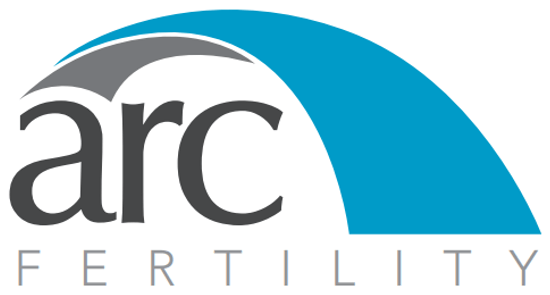
One of the significant challenges for any human resources department is attracting and retaining top talent. Employees and job seekers want to work for an organization that offers competitive pay, adequate health benefits, retirement plans and a program to support their growth. Many tech firms have all these benefits, but they also offer perks like free gourmet cafeterias, yoga studios, rock climbing walls and cocktail lounges. With COVID-19 forcing large numbers of employees to work from home though, do these perks still hold the same cache? This is the perfect time for companies to revisit these benefits and focus on items that could promote diversity, social equality and loyalty. Fertility benefits, which are designed to help people start a family, can help employers achieve diversity, equity, inclusion and retention goals.
The pandemic has played havoc with people’s lives, leading many couples to delay starting a family. According to projections from the Brookings Institution, there could be 500,000 fewer births in 2020. That’s a drop of about 13 percent from 2019. The birth rate is also at its lowest level since 1986. This will have consequences on many levels. Demographically, by 2034, the number of Americans over the age of 65 will outnumber those under 18 for the first time.
Unfortunately, pushing back the timeline to start a family raises new challenges for women, who face a real struggle to conceive and carry a child to term the older they get. Women are at their fertility peak between the ages of 20 and 30 years old. In 2018 however, the birth rate for women under 30 hit a record low. After 35, it becomes significantly more challenging to get pregnant. The inability to conceive takes an emotional toll on couples. On top of that, studies show that one in eight Americans is infertile. Sadly, only about half will seek medical care and only a quarter will have the benefits coverage needed to get the care they should have.
Thankfully, there are many options to tackle these challenges. The simplest is using smartphone apps or wearable technology to give doctors data or plot peak fertility for women. Women may choose to freeze their eggs, so that they have viable specimens if they plan on delaying pregnancy. Men can also freeze their sperm if they face diseases like testicular cancer or have corrective surgery to fix physical issues. There are other procedures as well, like Intrauterine Insemination (IUI) and In-vitro fertilization (IVF), and third-party reproduction methods, which utilize donated sperm, eggs or embryos. Finally, adoption and surrogacy can help same-sex couples and others who decide to take this path to build their families.
Unfortunately, some of these procedures are not affordable for many people. An average couple pays just over $19,000 for a round of IVF. The cost of using a surrogate can range from $60,000 to over $140,000. Adoption can be more affordable, but it can still average around $40,000 to $50,000. Many of these options are not affordable for the average couple.
A company offering fertility packages as part of their health benefits plan can choose the level of coverage they are comfortable providing. This could be full or partial payment, and they have the flexibility to decide if they’ll cover everything or just the standard treatments. This gives organizations the power to find the right fit for their budgets.
The great thing about offering this benefit is its universality. It can be used by both male and female employees, regardless of marital status or sexual orientation. A young woman might want to delay starting a family and choose to freeze her eggs until she’s ready, regardless of whether she has a partner. Same-sex couples could use IVF to carry a child or help finance a surrogate or adoption.
So, how does this help companies? An advanced benefits package allows an organization to differentiate itself from its competitors. Nearly every company offers packages that include health insurance, life insurance and retirement plans. They are essential but so universal that they probably don’t play a significant role in determining if someone will accept a job offer. An organization that offers fertility benefits, however, will stand out in a crowded marketplace and help make the company a more attractive place to work and a destination of choice for women. This is also true for retaining top employees. If they feel this is a benefit that would help them, they would be less likely to work for another company.
Offering benefits that cover reproductive medicine can also help improve diversity for a company. As it stands, women are underrepresented in senior management roles in most industries. There have been great strides over the past few decades, but there is still a large disparity. According to a 2019 study by BoardEx that looked at the largest 1,056 companies listed on the S&P 500 and Fortune 1000 (both publicly traded and large private organizations), only 26 had gender parity on their board of directors. The companies who achieved this include Amazon, Best Buy and General Motors. But for most organizations, women still hold fewer than one-third of board seats.
This issue persists even in entry-level management positions, with women only holding about 38 percent of these roles. There are several reasons for this discrepancy, but one primary reason is childbirth can impact a woman’s career trajectory. Major organizations need to do as much as possible to attract and retain female talent to fill these roles. Providing this type of benefit would help women know their company values them and is family friendly. It would be difficult to say how many employees would use this type of benefit, but here’s another thing to consider: more than 80 percent of millennials and members of the LGTBQ+ community intend to start a family.
There are other advantages to providing these benefits aside from attracting top talent. Not only do fertility benefits make employees feel welcome, but they increase loyalty, inclusion and morale. Studies show that with access to these types of benefits, employees express 1.5 times greater work satisfaction, are 2.5 times less likely to miss work and show increased productivity. They felt their company listened to their needs and were more likely to recommend it as a great workplace. All of this can have a direct impact on the bottom line. According to Gartner, organizations with a culture of inclusion generate 2.3 times more cash flow per employee and earn 1.4 times more revenue.
Without fertility benefits, employees who cannot afford IUI or IVF may turn to cheaper procedures, like fertility drugs, possibly resulting in multiple births. This could result in long-term costs to employer plans. Preterm births are a widespread complication for multiple births, and employers and private insurance take up almost 50 percent of all charges related to prematurity.
As the COVID-19 vaccines are rolled out worldwide, one can only hope that we will see a return to some semblance of normalcy. We do not know how long it will take to recover from the economic damage of the pandemic, nor what kind of long-term impact it has caused. It is clear though that, for companies of all sizes in these uncertain times, offering fertility benefits can not only improve diversity, inclusivity and equality, but it can also help increase earnings and attract and keep top employees.

